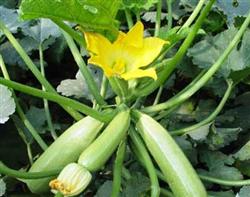Prevention and control measures of onion diseases in spring

Bulbs often rot when onions are harvested. The following control measures should be taken in spring: the common diseases of rotten onions caused by diseases are soft rot (bacterial disease) and stem rot (fungal disease). Control methods: ① should pay attention to crop rotation and avoid repeated cropping with onion and garlic crops. The cultivated land should be ploughed as deep as 30 cm as far as possible, such as rotary ploughing, spray no-deep tillage before planting, which is beneficial to the growth and development of roots and improve plant disease resistance. ② applies rotten fertilizer to prevent it from carrying bacteria. ③ tried to make use of ridge cultivation. During the growing period of ④, the application rate of nitrogen fertilizer should be controlled, and the fertilization should be combined with nitrogen, phosphorus and potassium. ⑤ bulb formation period should pay attention to timely drainage to avoid long-term accumulation of water. ⑥ timely prevention and control of insect pests to avoid causing wounds. Before the onset of ⑦, the following agents were used: 72% agricultural streptomycin 4000 times solution, 50% copper succinate wettable powder solution, 72% Kelu wettable powder solution and 8000 times Fuxing EC. The wounds caused by underground pests, such as rotting ground tiger, golden needle worm, maggot and so on, are easy to cause mold invasion and mildew and infectious diseases at the same time. In addition to irrigation and control, Wanling and hit should be sprayed in the ground from late April to early May to control the harm of adults. Due to the low soil temperature in early spring and the excessive accumulation of state nitrogen in the soil, the decay caused by element deficiency affects the absorption of calcium, potassium, magnesium and other elements, resulting in the occurrence of physiological diseases lacking the above fertilizer elements. Excessive application of nitrogen fertilizer during the growing period will also lead to the lack of the above elements. Due to the lack of the above elements, the leaf margin becomes green and the leaf tip dries up. At the same time, the outer and internal scales of the bulb also dry up and rot. In the cultivation of control methods, attention should be paid to the combined application of nitrogen, phosphorus and potassium, and high-energy red potassium and 0.2% calcium nitrate solution can be applied outside the root during the growing period to supplement potassium and calcium. The leaf sheath of rotten onion caused by Rain Water and stagnant water is loose and the gap is large in the late growth stage. Excessive stagnant water in the field will be immersed in the leaf sheath of lodging plants, and Rain Water will soak into the leaf sheath of unlodged plants, which will cause bulb rot. The prevention and control methods should pay attention to drainage and harvest as soon as possible.
- Prev

Ingenious planting methods and points for attention of Onion
Scientific fertilization after turning green in spring, the first fertilization should be carried out to supplement nutrition for the growth of onion roots and lay a foundation for the vigorous growth of aboveground parts in the future. Fertilization should be based on fully mature organic fertilizer, 1000 kg per mu, 20 kg calcium superphosphate and 10 kg potassium sulfate. ...
- Next

Overwintering zucchini should not be controlled by hormone.
The suitable seedling age of zucchini is about 45 days (5 true leaves). The row spacing of sowing plants is 3.3 cm, the height of overlying soil is about 3 cm, and the row spacing of transplanted plants is about 10 cm. During the period from sowing to unearthing, the temperature of seedling bed was controlled by 25: 28 ℃ in daytime and 12: 15 ℃ at night. After 3 days of unearthing, the daily temperature should be reduced to.
Related
- Where is it suitable to grow horseradish in China? it is expected to see the middle altitude horseradish in Alishan.
- How to prevent tomato virus disease reasonably? (Control methods included)
- Many people like to plant towel gourd on the balcony. What are the main points of this method and management?
- What crops can chili peppers be mixed with?
- Fertilization techniques and matters needing attention in Tomato
- What are the grafting techniques for peach seedlings in spring?
- Harm and control methods of root swelling disease of Chinese cabbage
- What are the pests of sweet potatoes? How to prevent and cure it?
- Symptoms, causes and Control methods of navel Rot in Tomato
- The cause of "Cucumber rotten bibcock" in Farmers' planting Cucumber and its Control Plan

